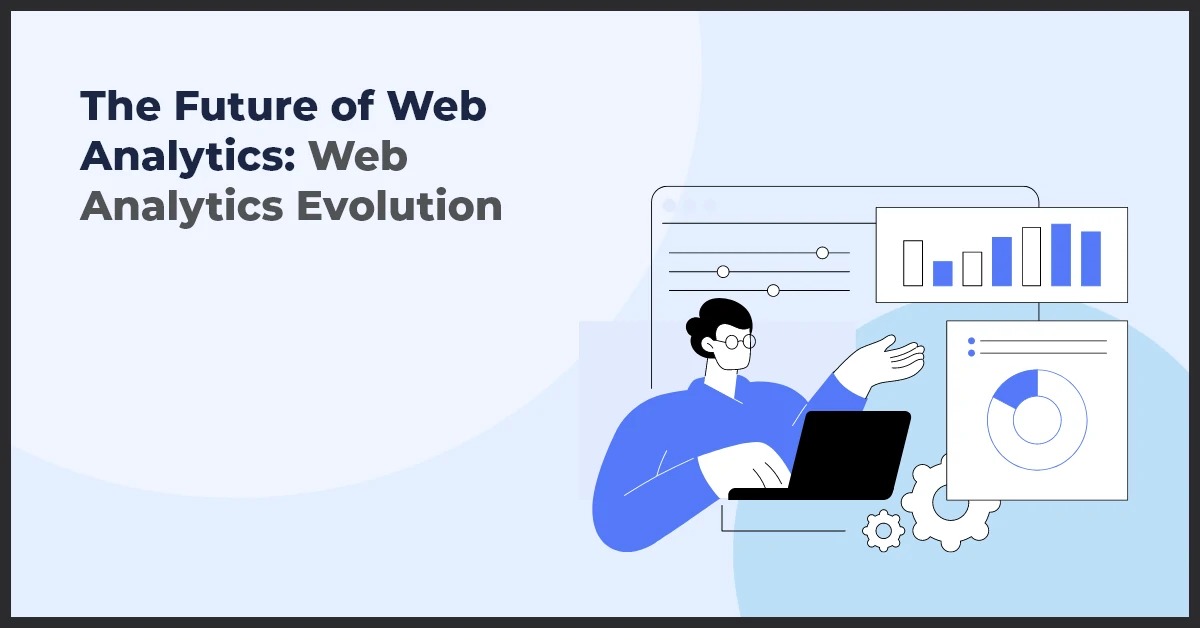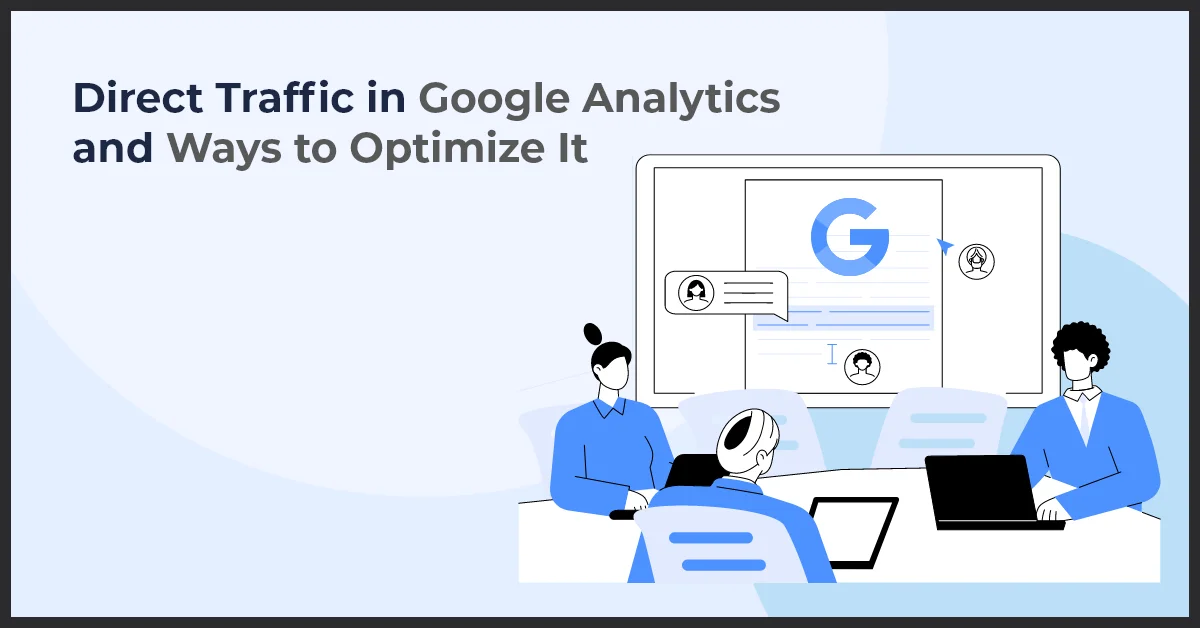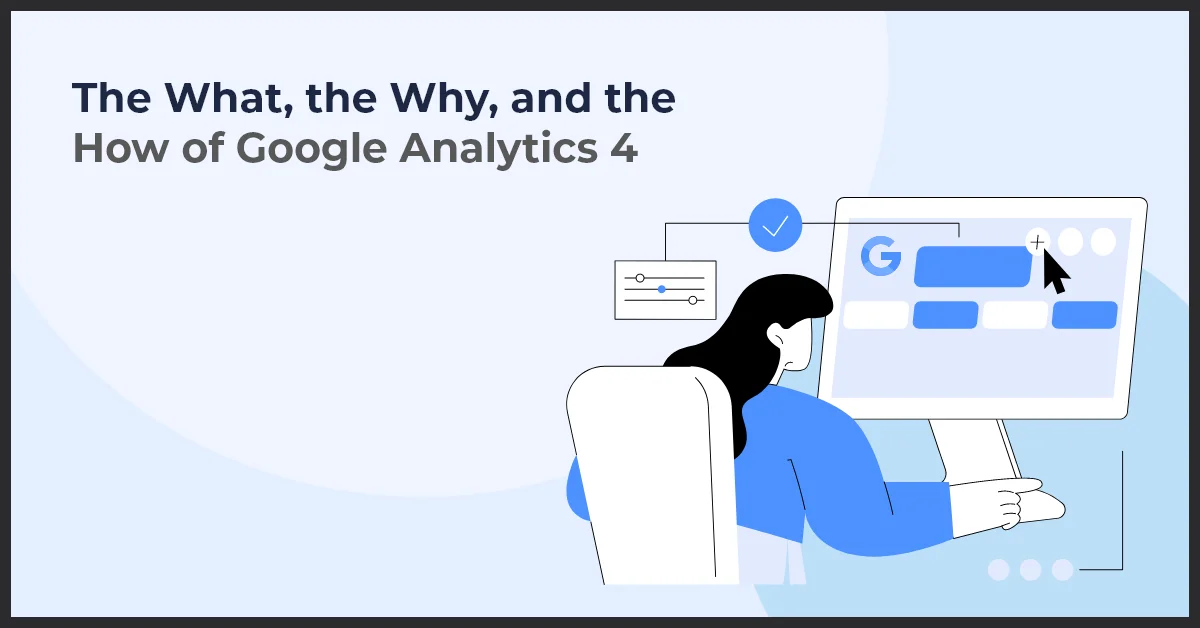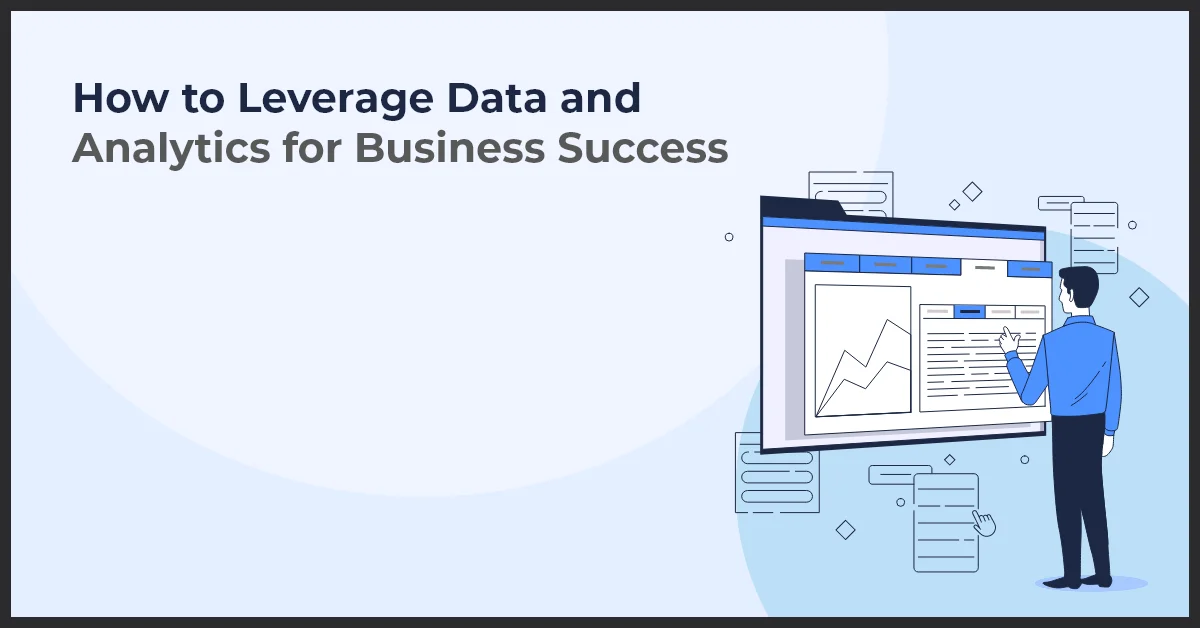The Future of Web Analytics: Web Analytics Evolution

Published on: April 19, 2023
Updated on: June 26, 2024
978 Views
- Analytics
9 min read
Over the years, web analytics has experienced changes transforming how businesses gather and interpret data about their presence. From methodologies to the introduction of technologies, the evolution of web analytics has brought forth both opportunities and challenges for businesses.
Traditional Approaches to Web Analytics
Web analytics methods include various techniques and technologies used to collect and analyze website data. These methods primarily focus on metrics such as:
- Website traffic
- Page views
- Bounce rates
- Conversion rates
Popular examples of web analytics tools include Google Analytics, Adobe Analytics, and Webtrends.
Limitations and Challenges Associated With These Approaches
While traditional web analytics tools have proven valuable in providing insights, they have limitations. Some challenges associated with these approaches include difficulties in tracking user behavior beyond the website and complex data integration processes. Additionally, measuring the impact of marketing efforts on performance can be challenging.
Emerging Technologies in Web Analytics
The emergence of web analytics technologies has allowed businesses to gain deeper insights into user behavior and optimize their online strategies.
These cutting-edge analytics tools encompass a range of technologies, such as AI-powered solutions, machine learning algorithms, and predictive analytics models.
Web analytics technologies like Kissmetrics, Mixpanel, and Hotjar are gaining traction.
One of the benefits of using analytics tools is that they offer businesses in-depth and detailed data. This allows them to understand user behavior on a granular level. These tools provide features like:
- Segmentation cohort analysis
- Funnel optimization
- Customer lifetime value analysis
Businesses can make data-driven decisions to optimize user experiences and improve website performance by leveraging these analytics tools.
As web analytics continues to evolve, there are some trends that businesses should keep an eye on:
- Mobile Analytics: With the increasing importance of devices, it has become crucial for businesses to focus on analyzing user behavior within apps and websites.
- Big Data Analytics: The rise of data has opened up possibilities for web analytics by enabling businesses to extract valuable insights from vast datasets.
- Real-time Analytics: Real-time analytics empowers businesses to monitor user behavior and respond promptly. This capability allows for delivering experiences while addressing any issues that may arise.
- AI and Machine Learning: intelligence (AI) and machine learning algorithms can automate data analysis, identify patterns, and make predictions.
Keeping up with these trends can help businesses stay ahead in the changing landscape of web analytics.They can be valuable tools for businesses to gain insights and optimize their strategies.
The changing trends in web analytics impact marketing strategies. By leveraging these trends, businesses can enhance their targeting capabilities, personalize marketing messages, optimize marketing funnels, and improve return on investment (ROI). These web analytics trends help businesses stay competitive in the evolving landscape.
Implementing web analytics trends may come with its share of challenges. Some common obstacles include concerns about data privacy and security skill gaps in analytics proficiency among staff members and the need for effective data visualization and reporting mechanisms. Overcoming these challenges requires a combination of advancements in training programs for employees and the establishment of data governance frameworks.
Key Trends to Keep an Eye on in Web Analytics
Utilizing data to inform decision-making is an aspect of web analytics as it empowers businesses to make informed choices. Companies can gain insights into their customers and their preferences by analyzing user behavior and tracking metrics.
Leveraging Data for Decision-Making
In web analytics, making data-driven decisions goes beyond collecting information; it involves understanding and effectively utilizing that data. By harnessing the power of data, businesses can optimize their marketing strategies, enhance user experience, and ultimately drive revenue growth.
Some critical elements of making data-driven decisions in web analytics include;
- Establishing goals and objectives for analyzing data.
- Collecting and evaluating data from sources.
- Segmentation of the collected data to target specific audience groups.
- Interpreting the data to derive insights.
- Testing and refining strategies based on the results of data analysis.
Businesses prioritizing decision-making based on data are more likely to stay in today's competitive digital landscape and achieve long-term success.
Real-Time Data Analysis
Real-time analytics is an emerging trend in web analytics that involves analyzing data as it is generated. This enables businesses to make decisions and take action based on up-to-date information.
Real-time data analysis empowers businesses to monitor trends actively, identify opportunities or challenges, and respond swiftly. By leveraging real-time insights, companies can adapt their strategies dynamically to align with changing market conditions.
By staying off these trends in web analytics, leveraging robust decision-making processes driven by comprehensive analysis, and embracing real-time insights, businesses can position themselves for continued growth and prosperity in the digital realm. Responding to user behavior enables individuals to develop timely strategies.
This emerging trend is vital in today's fast-paced digital landscape, where user preferences and behaviors can evolve rapidly. By leveraging the power of real-time data analysis, businesses can seize emerging opportunities and address issues before they escalate.
Real-time data analysis finds applications across industries, including:
- E-commerce: Tracking user activity during flash sales or limited-time offers.
- Finance: Detecting and preventing transactions in a manner.
- Advertising: Optimizing ad campaigns by analyzing real-time user engagement.
- Healthcare: Promptly monitoring data and vital signs for diagnosis and improved care.
Analyzing the customer journey has always been an aspect of web analytics. However, as customer interactions become more complex across channels and touchpoints observing the customer journey has become a prevailing trend.
Customer journey analysis involves examining every step a customer takes, from their awareness stage to their eventual purchase or conversion. Businesses can identify pain points, optimize touchpoints, and provide a user experience by understanding the customer journey.
Analyzing the customer journey involves methods and tools. These include attribution modeling, which helps understand how marketing channels impact the customer journey. Additionally, clickstream analysis allows tracking and studying user behavior on websites or apps.
Conducting customer interviews is essential to understanding the customer journey as it collects customer feedback directly. Session recordings are another helpful tool for examining user interactions on websites or apps.
How Can Web Analytics Trends Influence Marketing Strategies?
They help optimize marketing campaigns by providing insights derived from web analytics data. For instance, marketers can determine which channels are most effective in reaching their target audience by analyzing bounce rates, click-through rates, and conversions. With this information, they can allocate resources and budget wisely to maximize return on investment (ROI).
Furthermore, web analytics trends provide insights into consumer behavior and preferences for marketers. By analyzing data from websites and users, marketers can gain information about their target audience's interests, needs, and challenges.
This in-depth understanding empowers marketers to tailor their marketing messages and offerings in a way that truly resonates with their target audience. As a result, it boosts customer satisfaction and strengthens brand loyalty.
Personalized targeting plays an essential role in web analytics. By leveraging the data obtained through web analytics, marketers can develop marketing campaigns that deeply connect with their customers.
Personalization allows marketers to deliver content, product suggestions, and exclusive deals to each customer based on their preferences and browsing behavior. Marketers can create marketing messages that drive engagement and conversions by understanding customer preferences.
Top Strategies For Personalizing Marketing Efforts Using Web Analytics
- Segmentation: By dividing the audience into segments based on demographics, browsing behavior, or purchase history, marketers can design marketing campaigns that effectively appeal to each segment.
- Dynamic content: Utilizing web analytics data enables marketers to showcase personalized content on websites or in emails. For example, you can display product recommendations based on a customer's browsing history or present a greeting on the website.
Overcoming the Challenges of Implementing Current Web Analytics Trends
Implementing web analytics trends can genuinely transform businesses. It is not without its fair share of hurdles. Let's look at organizations' obstacles and how to overcome them.
Ensuring Data Privacy And Compliance
Data privacy has increasingly become a concern in years due to worries about safeguarding personal information. Organizations must prioritize data privacy when incorporating web analytics trends. Adhere to regulations.
Upholding Data Privacy And Compliance In Web Analytics
Organizations should establish privacy policies and practices to tackle this challenge. This entails obtaining consent from website visitors for collecting and utilizing their data, clearly articulating the purpose behind data collection, and granting individuals control over their information.
Recommended Practices And Regulatory Adherence For Data Privacy
Organizations should familiarize themselves with practices and regulations about data privacy, such as the General Data Protection Regulation (GDPR). By adhering to these guidelines, businesses can ensure that their web analytics activities align with requirements while safeguarding consumer privacy.
Integrating Multiple Data Sources For Comprehensive Analytics
Businesses gather data from various sources, such as websites, social media platforms, and offline channels. The process of integrating and analyzing data from sources can be quite challenging.
Overcoming The Challenges Of Integrating Data Sources
The primary obstacle lies in integrating the data collected from each source while ensuring accuracy, completeness, and consistency. Organizations should invest in tools and technologies for data integration to tackle this challenge, which will streamline the process and eliminate any pockets of information.
The Advantages Of Analytics Across Channels
Organizations can gain valuable insights into customer behavior and preferences across multiple channels by successfully integrating and analyzing data from various sources. This holistic perspective empowers businesses to make decisions based on data-driven strategies that optimize their marketing efforts for outcomes.
Final Thoughts
We anticipate a more significant focus on security and privacy in business analytics in the future as corporations continue to unleash a virtual door to consumer data. Other noteworthy themes include AI risk management, IoT-enabled prescriptive analytics, and monetizing digital assets through safe information exchange.
Growth Natives can assist you in doing a thorough analysis of unstructured web data and producing insights that can be put to use. Contact us at info@growthnatives.com for additional information.



